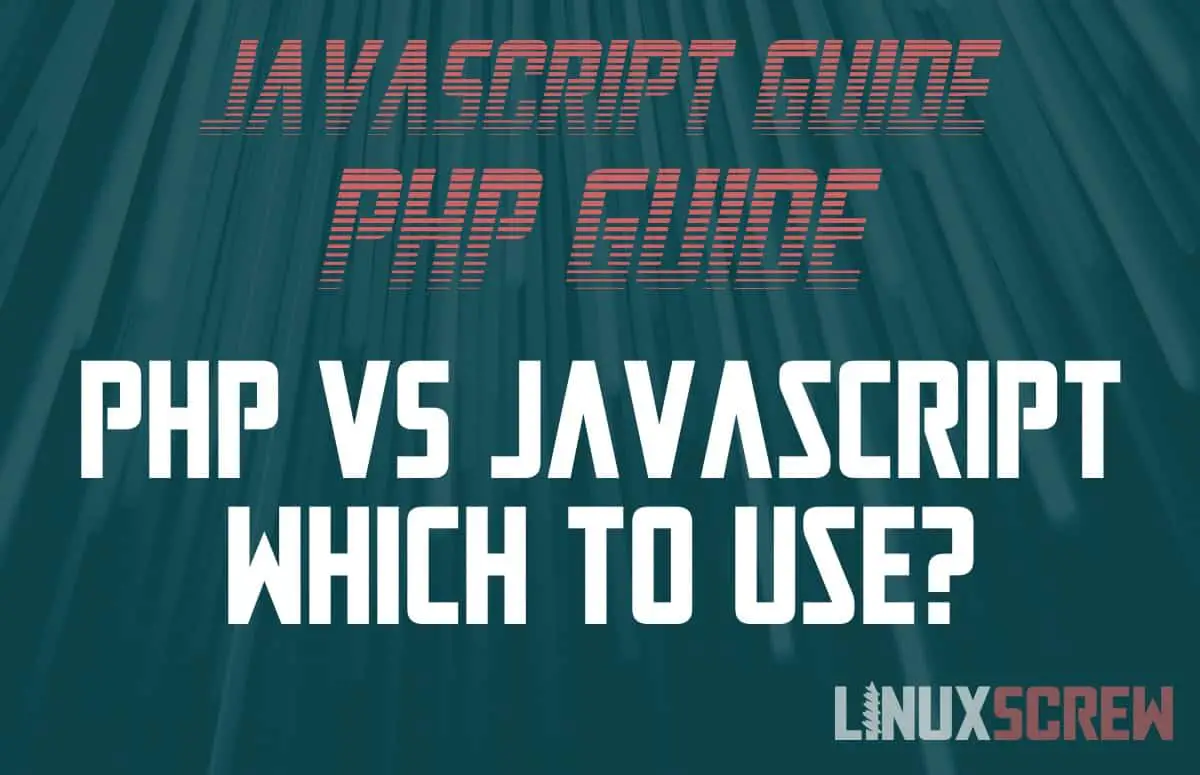PHP and JavaScript are the most commonly used programming languages on the web – so which one should you use for your project?
Choosing which programming language to use for a project is important. Some of the questions you’ll want to run through are:
- Where will the application be run, and which languages are supported in that environment?
- Do I already have knowledge of one of the languages being considered?
- What does the application need to do?
- Are there any good frameworks or libraries that will do some of the legwork for me?
If you’re asking which of PHP or JavaScript to choose between, you’ve probably settled on building a browser-based application.
However, there isn’t always a direct comparison to be made when comparing PHP and JavaScript. Read on for info.
PHP Coding on the Server Side / Backend
PHP is a preprocessing language. It prepares pages of HTML code or other data and then sends them to the user’s web browser. It is server-side only.
It can not respond live to clicks, button presses, touches, or mouse movements. It can just receive a request (a link pressed, a page request, a form submitted) and return a document based on that request’s contents and any processing undertaken before the request was returned.
For example, PHP is designed for API backends or applications where users submit and read data.
PHP could be used to receive a search request and return the relevant database records on a new page, but it could not be used to respond to the user pressing a key on the keyboard or display a pop-up.
JavaScript Coding on the Client-Side / Frontend
Because PHP is built for server-side tasks only, you’ll be using some JavaScript on the client-side regardless of whether you use PHP or JavaScript (via Node.js) on the backend.
JavaScript runs in the web browser and handles the client-side dynamic features of a page – pop-ups, reading input, requesting data (from the server-side), animating menus, etc.
JavaScript has become ubiquitous – if you’re building for the web, you’ll have to get to know it.
Node.js – JavaScript Everywhere
So, if you’re already going to have to learn JavaScript for the frontend, you may as well use it for the backend – right?
This isn’t really a bad assessment.
However, it’s good to know more than one programming language, and PHP shouldn’t be discarded straight away – there are a lot of good libraries for PHP, and your hosting environment might only support PHP.
Additionally, your app idea might require interfacing with something like WordPress or some other service built with PHP – so it may have an advantage through that.
Anyway, back to Node.js.
Node.js allows you to run JavaScript outside of a web browser. This lets you use HTTP frameworks to build and serve live, dynamic applications written in JavaScript. With it, you can use JavaScript to write the functionality of both the front-end and back-end.
Conclusion
Look, it’s never really possible to straight-up recommend a programming language, platform, or framework for a particular project without knowing the brief for the project.
Once you’ve built things in PHP and JavaScript/Node.js, you’ll get a feel for what each is good for and start getting to know some of the common frameworks and libraries for each. This will direct you when making a choice.
If you’re just looking to experiment and learn, it’s really a matter of user preference – read some documentation – look at some example projects on GitHub and see which code looks most readable to your eyes.
Once you’re familiar with one language, others become easier to understand, and you can start learning those too and forming your own preferences.

